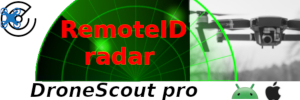Not sure they can actually enforce many rules to be honest, all or our relative air authorities with drone legislation seem to rely on reactive enforcement, and even then it's rare people breaking rules get penalised (unless involved and identified being responsible for a REALLY bad incident).
Night flying is no different to flying over 400', flying dangerously too close to people, or outside VLOS, and pretty sure you also have no flying above cloud / fog etc.
All other countries with similar rules to the US (and we all seem to be bringing in the same / very similar rules, at the same time) and pretty much ALL other countries with similar rules have a 'no flying at night' rule, apart from the US.
I can't see any possible reason (or the common sense behind), a trained, licenced drone pilot would have less restrictions in that area, than someone who's just come out of a drone shop (or had an internet delivery) and taking their drone up in a pitch black sky.
In general, night flying has one purpose, to get those beautiful city scapes lights in photos, and to a lesser extend video, though moving around at night is possibly many times more dangerous than a static photo shoot straight up and down from a safe point.
I agree, some will find night flying easier than others, personally, if you have something to orientate yourself on, and let's face it you aren't going to be flying at night without something to focus on, then with the maps and home locations on screen, and the altitude / distance readouts etc, you can get used to flying without too much trouble.











